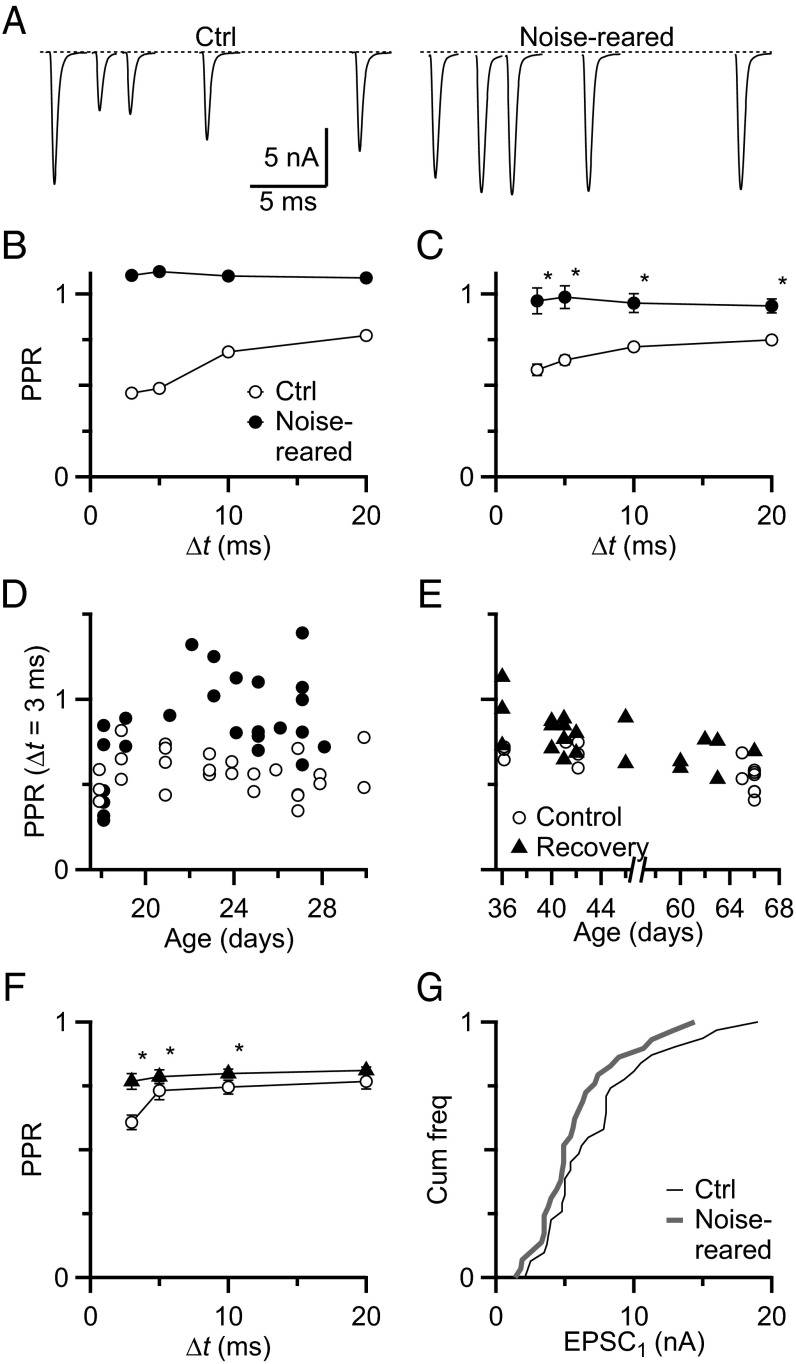Fig. 1.
Noise exposure lowers Pr at the endbulb of Held. AN fibers were stimulated with pairs of pulses of different interpulse intervals, Δt = 3–20 ms. (A) Representative traces recorded from P26 BCs from control and noise-reared animals. In control conditions (Left), EPSCs show depression at all intervals whereas, after noise rearing (Right), EPSCs show no depression, but rather facilitation. (B) Paired-pulse ratio (PPR) for the representative experiments in A. (C) Average PPR for control (n = 17) and noise-reared (n = 22) in animals P21 or older. PPR differed significantly (P < 0.005) at all intervals. (D) PPR for control (n = 28) and noise-reared (n = 26) at Δt = 3 ms as a function of age. Noise rearing commenced at P12. (E) PPR at Δt = 3 ms for control (open circles) and recovery (closed triangles) BCs. (F) Average PPR is slightly elevated over control after recovery (control n = 15; recovery n = 20, P < 0.05 for each interval). (G) Cumulative frequency of EPSC1 amplitudes in BCs from control (n = 34) and noise-reared animals (n = 22). The amplitudes do not differ significantly (P > 0.5, Kolmogorov–Smirnov test). Averages in C and F and in subsequent figures are represented by the mean ± the SEM.

